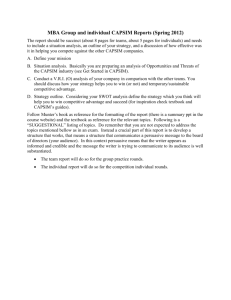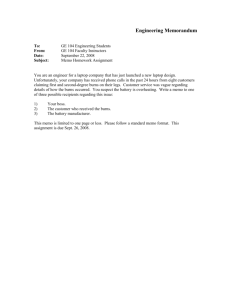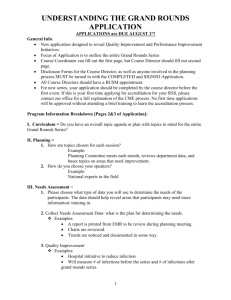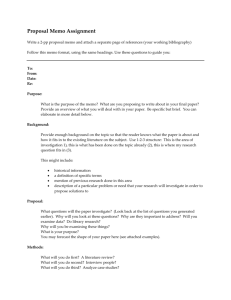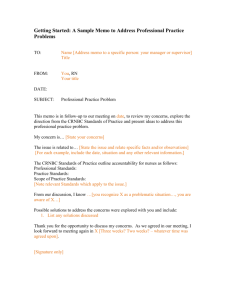Situation analysis
advertisement
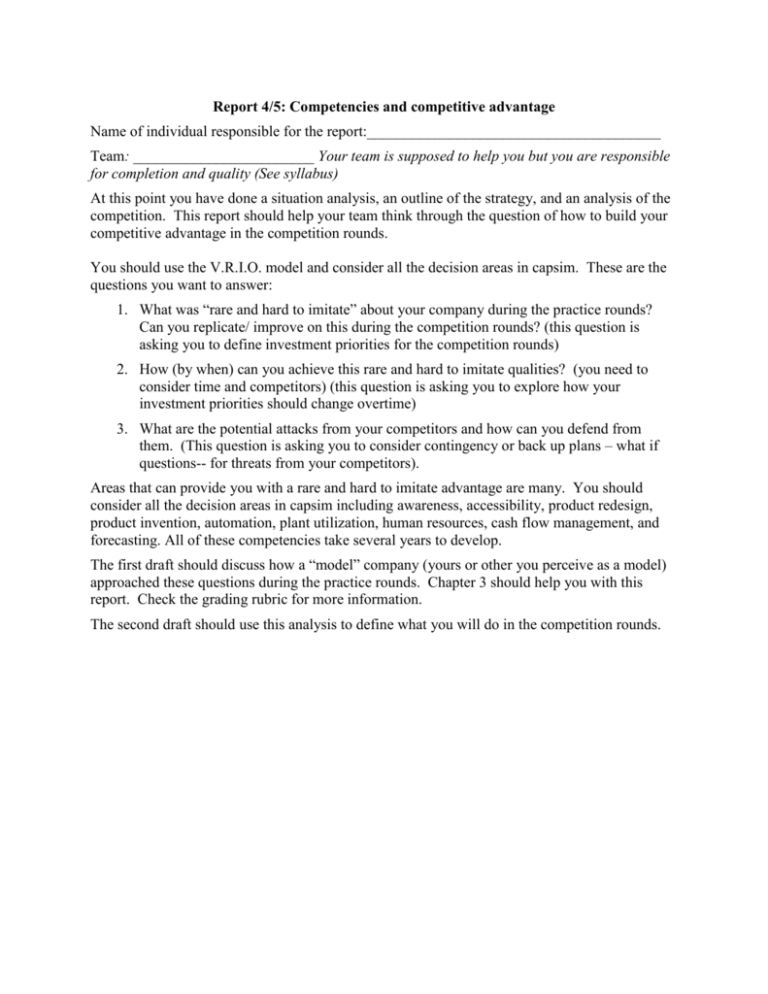
Report 4/5: Competencies and competitive advantage Name of individual responsible for the report:_______________________________________ Team: ________________________ Your team is supposed to help you but you are responsible for completion and quality (See syllabus) At this point you have done a situation analysis, an outline of the strategy, and an analysis of the competition. This report should help your team think through the question of how to build your competitive advantage in the competition rounds. You should use the V.R.I.O. model and consider all the decision areas in capsim. These are the questions you want to answer: 1. What was “rare and hard to imitate” about your company during the practice rounds? Can you replicate/ improve on this during the competition rounds? (this question is asking you to define investment priorities for the competition rounds) 2. How (by when) can you achieve this rare and hard to imitate qualities? (you need to consider time and competitors) (this question is asking you to explore how your investment priorities should change overtime) 3. What are the potential attacks from your competitors and how can you defend from them. (This question is asking you to consider contingency or back up plans – what if questions-- for threats from your competitors). Areas that can provide you with a rare and hard to imitate advantage are many. You should consider all the decision areas in capsim including awareness, accessibility, product redesign, product invention, automation, plant utilization, human resources, cash flow management, and forecasting. All of these competencies take several years to develop. The first draft should discuss how a “model” company (yours or other you perceive as a model) approached these questions during the practice rounds. Chapter 3 should help you with this report. Check the grading rubric for more information. The second draft should use this analysis to define what you will do in the competition rounds. Competencies and competitive advantage memo: Grading sheet 1. Opening paragraph a. Presents issue(s) and choice point(s) motivating the analysis, for example (what follows is not a recipe): We need to develop distinctive competencies in the areas x, y, and z to achieve our “broad differentiation” or “our low-cost” or our “focus” strategy. (Must employ ideas from chapters 4 and 5) b. Lists briefly the primary reasons for this conclusion. It selects from the answers to the questions stated in the body of the memo. c. Provides a useful roadmap for reading the memo, not just a vague list POINTS Very vague and/or wrong topic 2.5 2. Incomplete 5 Complete but unclear Clear and incisive 7.5 10 Body of the Memo it answers to the questions stated in the assignment in a way that supports the conclusion stated in the introduction. It must, of course, follow the outline provided in the introduction. When discussing how your answers support your choice. You should follow acknowledge that you are making a choice, there are the risks, and discuss the potential “fatal flows” of your thinking. POINTS 3. Very incomplete and vague Incomplete Complete but vague and unclear Clear and incisive 7.5 15 22.5 30 Conclusion reiterates in a way that enhances the memo’s persuasiveness and reader’s confidence on the recommendation a. It re-states your first statement at the light of what you have discussed. It gives a glimpse of the strategic options this analysis implies. prioritizes the recommended actions b. It states recommended first steps. POINTS Very vague and/or wrong topic 2.5 Incomplete 5 Complete but unclear 7.5 Clear and incisive 10 4. Document Design (follows Munter;s guide) c. d. Use of stand-alone nutshell idea headings. Example of WRONG heading: External analysis. RIGHT heading Rivalry in the sensors market is likely to be high. What is the difference? The first is descriptive and gives no information. The second one provides information derived from the external analysis. Of course, this information needs to be discussed in the paragraphs under this heading. Use of white space, indentations, bullets, etc. POINTS Does not follow guidelines 2.5 Follows guidelines partially 8 OK Great design 14 20 Failing grade D – C range B range 0 to 20 21 to 45 46 to 60 A range TOTALS 61 and up
